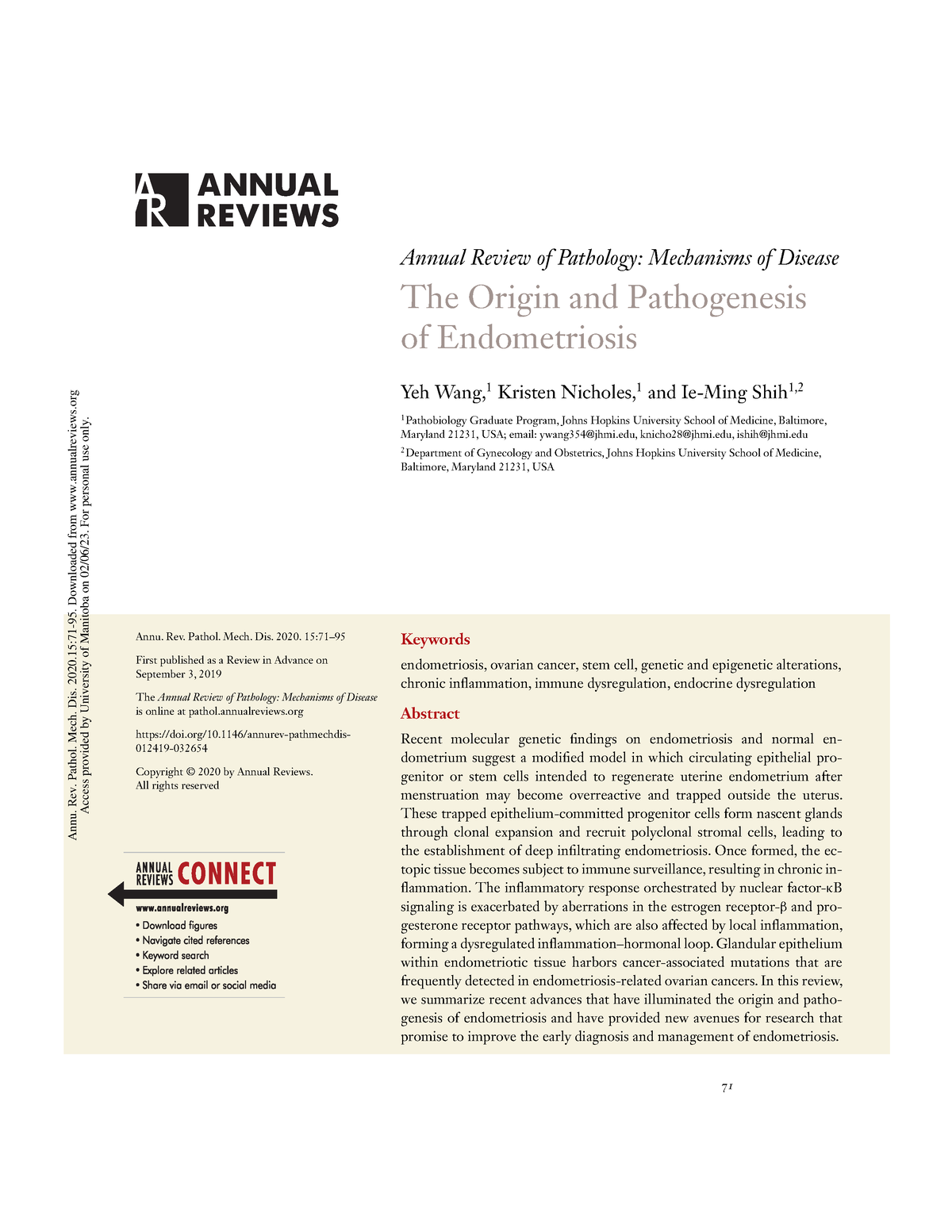胶质母细胞瘤的免疫病理学
IF 34.5
1区 医学
Q1 PATHOLOGY
Annual Review of Pathology-Mechanisms of Disease
Pub Date : 2025-10-08
DOI:10.1146/annurev-pathmechdis-042524-025950
引用次数: 0
摘要
胶质母细胞瘤(GBM)是最常见和恶性的原发性脑肿瘤,其特点是高度多样化和深度免疫抑制的肿瘤微环境(TME)为肿瘤进展提供了不受约束的环境,并显着复杂化了治疗干预。尽管嵌合抗原受体T细胞和免疫检查点抑制剂等免疫治疗方法取得了进展,但由于GBM TME的复杂性和强大的免疫逃避机制,其疗效仍然有限。在这篇综述中,我们阐明了TME中导致这种免疫抑制状态的细胞成分之间复杂的相互作用,包括肿瘤相关的巨噬细胞/小胶质细胞、髓源性抑制细胞、调节性T细胞和胶质瘤干细胞,以及其他导致TME复杂性的关键因素,如与中央坏死相关的严重缺氧、血脑屏障和细胞外基质。这篇综述还强调了免疫逃避的机制和最近的免疫治疗方法及其生物学原理,强调需要综合治疗策略,既针对免疫抑制因子,又增强免疫激活。本文章由计算机程序翻译,如有差异,请以英文原文为准。
Immunopathology of Glioblastoma
Glioblastoma (GBM), the most frequent and malignant primary brain tumor, is characterized by a highly diverse and profoundly immunosuppressive tumor microenvironment (TME) that provides an unconstrained environment for tumor progression and significantly complicates therapeutic interventions. Despite advances in immunotherapeutic approaches, such as chimeric antigen receptor T cell and immune checkpoint inhibitors, efficacy remains limited due to the complexity of the GBM TME and robust immune evasion mechanisms. In this review, we elucidate the intricate interplay among cellular components within the TME that lead to this immunosuppressive state, including tumor-associated macrophages/microglia, myeloid-derived suppressor cells, regulatory T cells, and glioma stem cells, as well as other critical elements that contribute to TME complexity, such as the severe hypoxia associated with central necrosis, the blood–brain barrier, and the extracellular matrix. This review also highlights mechanisms of immune evasion and recent immunotherapeutic approaches along with their biologic rationale, underscoring the need for integrated therapeutic strategies that both target immunosuppressive elements and enhance immune activation.
求助全文
通过发布文献求助,成功后即可免费获取论文全文。
去求助
来源期刊
CiteScore
62.60
自引率
0.00%
发文量
40
期刊介绍:
The Annual Review of Pathology: Mechanisms of Disease is a scholarly journal that has been published since 2006. Its primary focus is to provide a comprehensive overview of recent advancements in our knowledge of the causes and development of significant human diseases. The journal places particular emphasis on exploring the current and evolving concepts of disease pathogenesis, as well as the molecular genetic and morphological changes associated with various diseases. Additionally, the journal addresses the clinical significance of these findings.
In order to increase accessibility and promote the broad dissemination of research, the current volume of the journal has transitioned from a gated subscription model to an open access format. This change has been made possible through the Annual Reviews' Subscribe to Open program, which allows all articles published in this volume to be freely accessible to readers. As part of this transition, all articles in the journal are published under a Creative Commons Attribution (CC BY) license, which encourages open sharing and use of the research.

 求助内容:
求助内容: 应助结果提醒方式:
应助结果提醒方式:


